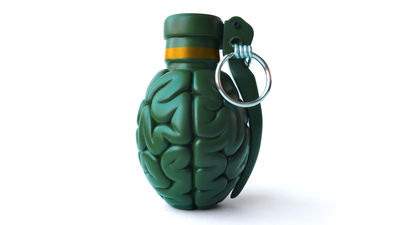To make it possible to distinguish persons with Alzheimer's disease in the future from MRI scan images of the brain by machine learning algorithm

Italian scientists succeeded in developing algorithms that can see through people with high risk of Alzheimer's disease in the future using image analysis technology using machine learning. Diagnosis by this method is not only invasive and inexpensive but also expected to be applied to other brain diseases.
[1709.02369 v 1] Brain structural connectivity atrophy in Alzheimer's disease
https://arxiv.org/abs/1709.02369v1
AI spots Alzheimer's brain changes years before symptoms emerge | New Scientist
https://www.newscientist.com/article/2147472-ai-spots-alzheimers-brain-changes-years-before-symptoms-emerge/
Alzheimer's disease still has no effective treatment yet, but as early detection can delay the progression of the disease and the patient will have time to arrange personal belongings, the development of technology to quickly see the signs of Alzheimer's disease It is important.
Meanwhile, a research team of Dr. Nicola Amoroso and Dr. Mariana La Rocca of the University of Bari in Italy succeeded in developing a machine learning algorithm capable of discriminating brain structural changes caused by Alzheimer's disease.
Dr. Amoroso and colleagues trained the machine learning algorithm using MRI scan images of 38 Alzheimer's disease patients acquired from the University of Southern California University database and 29 healthy subjects as target group. The objective was to distinguish the brains of healthy brains and Alzheimer's disease accurately from the connectivity of neurons.

We did not specify the optimal solution of the size of the region to be divided, especially when subdividing the image of the brain to be scanned into small areas and image recognition. Researchers have found that the algorithm for discriminating Alzheimer's disease by training size has been trained and that the highest discrimination accuracy can be obtained in the case of brain region of 2250 to 3200 cubic millimeters.
After that, the researchers used the brain scan images of 148 subjects to test the accuracy of the algorithm. Of the subjects, 48 were Alzheimer's patients, 52 were healthy people and 48 were mild cognitive impairment patients (MCI), but these dementia patients developed Alzheimer's disease after two and a half to nine years People were.
The algorithm developed by Dr. Amoroso succeeded in distinguishing brains of Alzheimer's disease patients and healthy subjects with high precision of 86% and furthermore it is also possible to distinguish healthy brain and MCI brains with an accuracy of 84% I was able to do it. This result suggests that researchers are likely to see brain changes leading to Alzheimer's disease long before the doctor can diagnose the patient and discover the symptoms of Alzheimer's disease.

It has been found that Alzheimer's disease is related to beta amyloid and neurofibrillary tangle in the brain and it is known that analysis of cerebrospinal fluid and analysis of cerebrospinal fluid or use of a radioactive tracer will give a person who is at high risk of developing Alzheimer's disease 10 years later However, these tests are invasive and have the disadvantage that it is possible only in highly specialty facilities and the examination cost is high. In contrast, the machine learning algorithm developed by Dr. Amoroso is non invasive and can discriminate risk of Alzheimer's disease inexpensively.
The developed machine learning algorithm seems to have very high versatility, and Dr. La Rocca plans to extend the technology to use for early diagnosis of diseases of other neurodegenerative conditions such as Parkinson's disease.
Related Posts:
in Science, Posted by darkhorse_log







